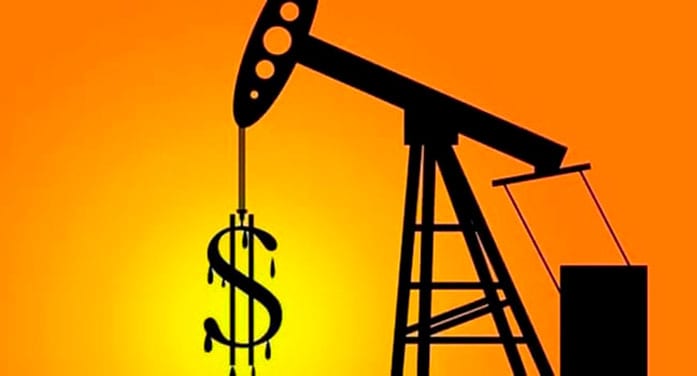 Oil extended its longest winning streak in two years last week. Crude oil prices climbed more than nine per cent, as the Organization of Petroleum Exporting Countries and its allies in OPEC+ curbed supplies, depleting global oil inventories.
Oil extended its longest winning streak in two years last week. Crude oil prices climbed more than nine per cent, as the Organization of Petroleum Exporting Countries and its allies in OPEC+ curbed supplies, depleting global oil inventories.
Reading Time: 3 minutes
A United States government report also indicated that U.S. domestic oil stockpiles have fallen by 6.6 million barrels, to their lowest levels since March 2020.
And the International Energy Agency estimates global inventory in onshore tanks and floating storage has shrunk by about 300 million barrels since OPEC+ made deep output reductions in May 2020.
Reduced crude supply and a COVID-19 vaccine-driven demand boost have helped to strengthen the crude markets.
And Chinese demand is up. The number of tankers sailing toward China jumped to a six-month high recently. Royal Dutch Shell chief executive officer Ben van Beurden said fuel sales in China are back into “significant growth mode.”
There are also meaningful signs of demand recovery in other high-growth economies, including India and Brazil, UBS oil analyst Giovanni Staunovo told Julia Horowitz of CNN Business.
Investors are also keeping a close watch on a $1.9-trillion COVID-19 aid package in the U.S. that lawmakers are expected to pass sometime this month.
And the possibility of Iranian oil not returning to the markets soon, as was anticipated by some, provided additional support to the markets.
Trading house Trafigura Group sees prices moving even higher as refiners increase processing rates to meet rising product demand amid tight physical crude supplies.
“Managing to breach $60 again feels like the market is finally resurfacing after the long struggle and (taking) a proper breath,” Rystad Energy’s Paola Rodriguez-Masiu was quoted as saying. “It offers a feeling of normality again.”
Yet strong headwinds continue to assert themselves.
The U.S. oil rig count, an early indicator of future output, rose last week to its highest since May 2020, Baker Hughes reported.
The Paris-based International Energy Agency underlines in its February report that the rebalancing of global oil markets remains “fragile” amid weaker estimates for demand and a recovery in supplies, reported Grant Smith for Bloomberg.
As the stockpile decline gathers pace, it also “sets the stage for OPEC+ to start unwinding cuts even if producers outside the group ramp up faster than currently projected,” the report said. It also boosted projections for output outside OPEC+ by 400,000 bpd, as price recovery spurs investment.
IEA has reduced its forecasts for world oil consumption in 2021 by 200,000 barrels per day (bpd) as the pandemic continues to limit travel and economic activity. “Renewed lockdowns, stringent mobility restrictions, and a rather slow vaccine rollout in Europe have delayed the anticipated rebound,” IEA said on Thursday in its monthly report.
Demand will decline by one million bpd this quarter from late last year, it says. And IEA now forecasts that stockpiles will increase during the second quarter, having predicted last month that they would remain broadly steady.
Some reports now indicate that crude oil futures may have rallied too far, too fast, especially with key technical indicators signalling crude is in overbought territory. The world’s largest independent oil trader, Vitol, and rival Gunvor Group both now express caution over the recent rally.
Caution seems the best word to describe the reality of the global crude oil market.
Toronto-based Rashid Husain Syed is a respected energy and political analyst. The Middle East is his area of focus. As well as writing for major local and global newspapers, Rashid is also a regular speaker at major international conferences. He has been asked to provide his perspective on global energy issues by both the Department of Energy in Washington and the International Energy Agency in Paris.
For interview requests, click here. You must be a Troy Media Marketplace media subscriber to access our Sourcebook.
The views, opinions and positions expressed by columnists and contributors are the author’s alone. They do not inherently or expressly reflect the views, opinions and/or positions of our publication.

